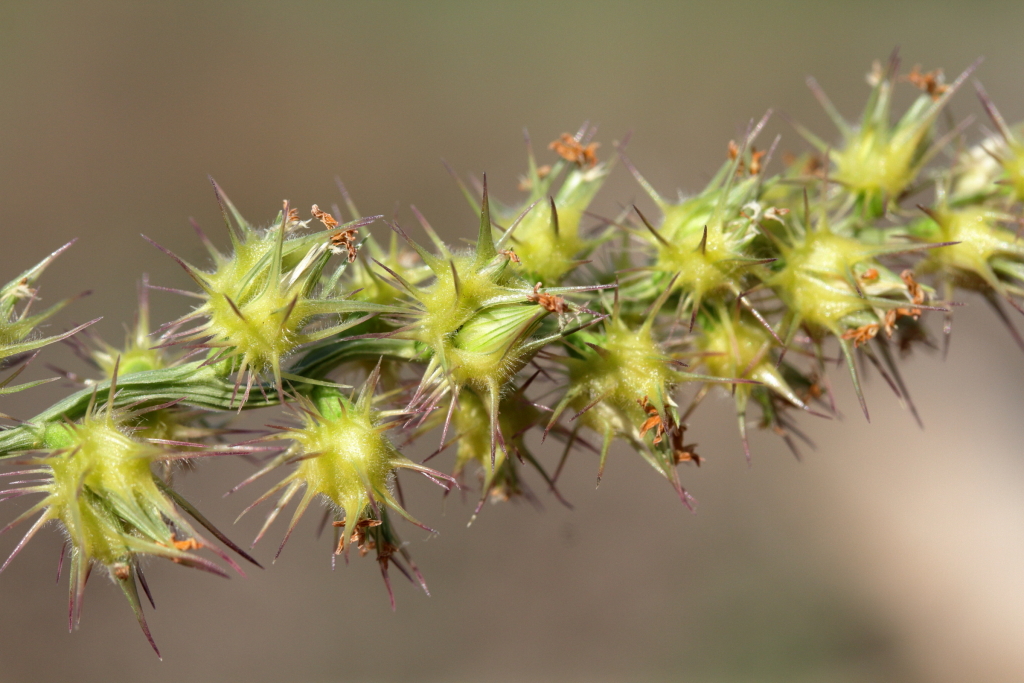Cenchrus longispinus
(Hack.) Fernald Spiny Burr-grassTufted annual. Culms basally decumbent, to 50 cm high. Leaves mostly glabrous, rarely sparsely hairy; blade flat to inrolled, to 10 cm long and 5 mm wide; sheath keeled, often purplish; ligule c. 1 mm long. Inflorescence a spike, 3–7 cm long, the axis flattened and flexuose; involucre (burr) 7–10 mm long, with a basal series of bristles or much finer spines and several uneven rows of stout, apically retrorsely barbed bristles, the longest 5 mm long or more; bristles numbering 40 or more in total; body of the burr shortly hairy. Spikelets 1–3 per burr, 6–7.5 mm long; lower glume 1-nerved, acute, 1.5–4 mm long; upper glume 5-nerved, acute, 4.5–6 mm long; lower floret male, its lemma equal to or slightly longer than upper glume, palea subequal to lemma; fertile lemma as long as spikelet, 5-nerved, ovate, acuminate, papery; palea subequal to lemma. Flowers Jan.–Apr.
LoM, MuM, Wim, GleP, VVP, VRiv, MSB, MuF, GipP, Gold, GGr, NIS, VAlp. Naturalised in all mainland States, widely worldwide. Probably native to North America and South America. In Victoria, a common and troublesome weed on sandy soils in the far north-west (Mildura, Swan Hill, Ouyen areas), particularly in irrigated farmland, a sporadic weed elsewhere (e.g. noted in railyards at Yarrawonga and Cranbourne).
Walsh, N.G. (1994). Poaceae. In: Walsh, N.G.; Entwisle, T.J., Flora of Victoria Vol. 2, Ferns and Allied Plants, Conifers and Monocotyledons, pp. 356–627. Inkata Press, Melbourne.
 Spinning
Spinning



